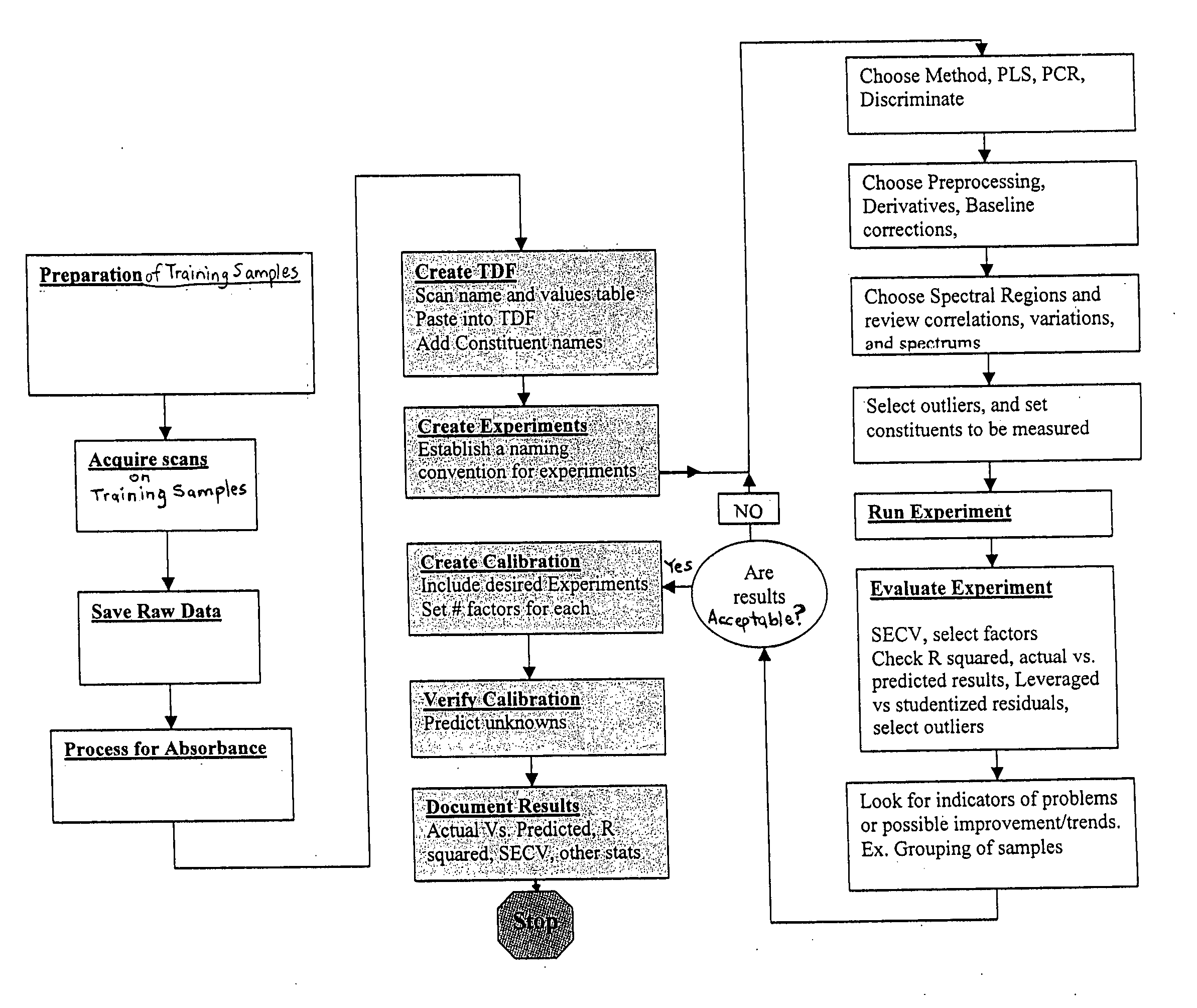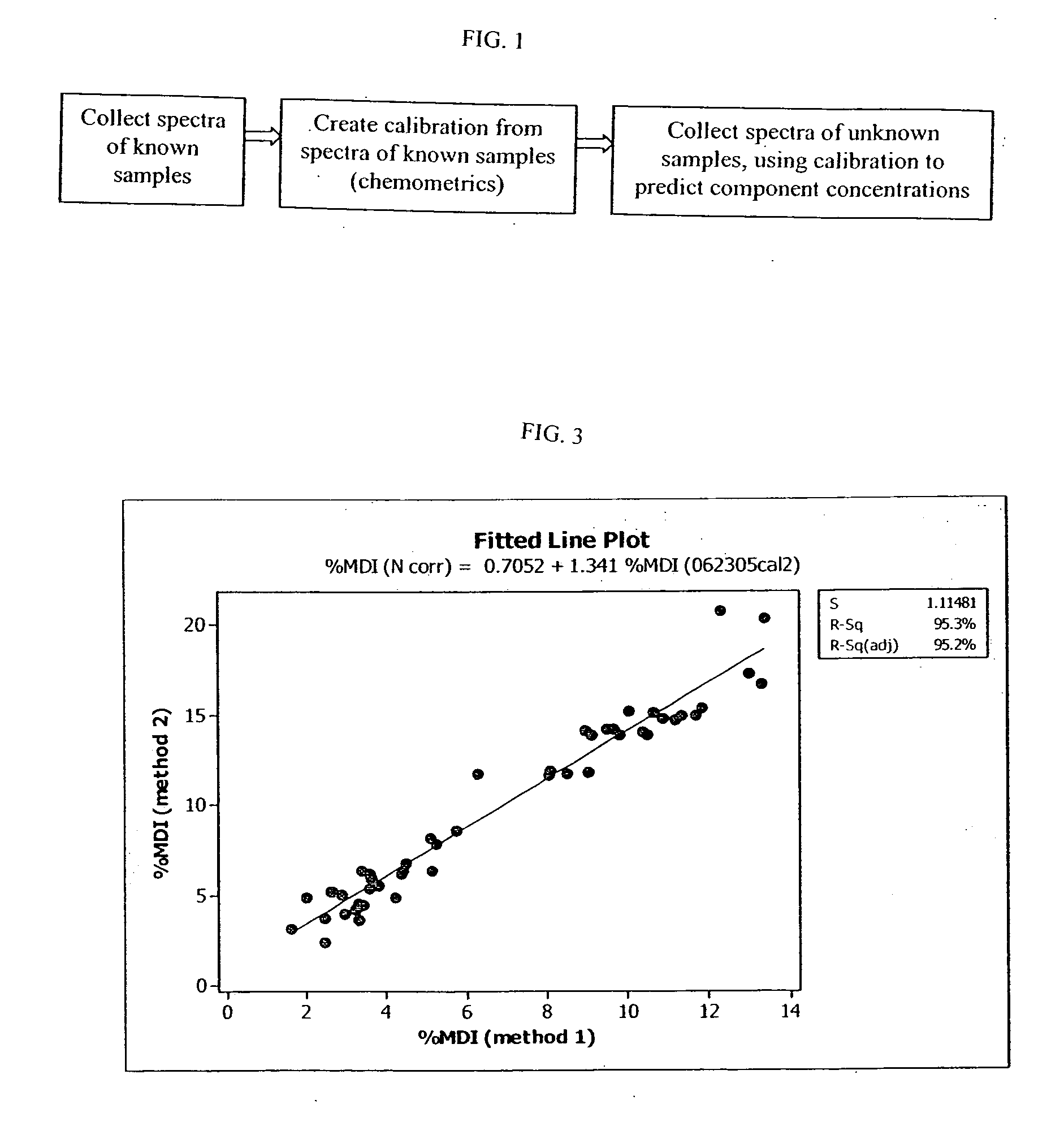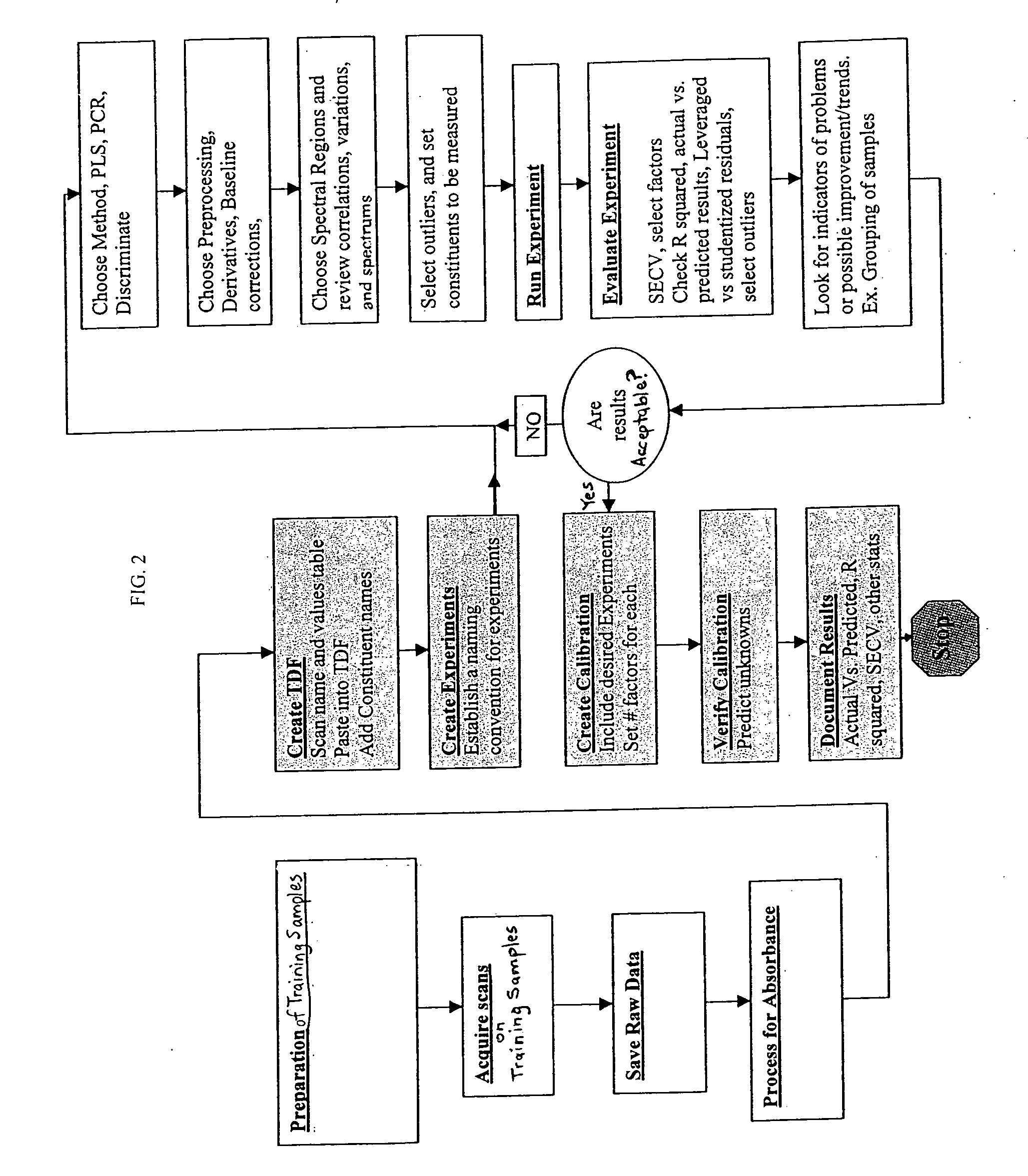Method using NIR spectroscopy to monitor components of engineered wood products
- Summary
- Abstract
- Description
- Claims
- Application Information
AI Technical Summary
Benefits of technology
Problems solved by technology
Method used
Image
Examples
example 1
[0048] The use of NIR spectroscopy to quantitatively measure the amount of resin, wax, and moisture in OSB was investigated. The protocols used were as follows.
[0049] A model for determining the concentration of MDI, wax, powdered phenolic resin, and moisture in ground flake samples was constructed by preparing samples of known concentrations of these components in the laboratory. Dry flakes (3-12% moisture content; at least 85% southern pine content) were obtained from an OSB mill in Commerce, Ga. and ground to pass 0.25 inch screen. MDI, wax, and powdered phenolic resin were added in specific amounts to ground flake samples of precisely known weight. Each sample had different contents of each of the components, and component concentrations were randomly chosen from within a range for each sample (Table 2 gives the ranges for each component). The mixtures were each blended until good mixing was achieved. The near-infrared spectrum between 1200 and 2400 nm was collected on the port...
example 2
[0051] MDI concentrations in flake samples from the Commerce, Ga. (3-12% moisture content; at least 85% southern pine content) mill were calculated in two ways.
[0052] The samples were ground and scanned by a LT Instruments NIR spectrometer according to established procedure. The resulting spectra were analyzed by chemometric software, based on an existing library of similar flake samples, to predict the MDI concentrations of the unknown samples.
[0053] The same samples that were scanned by NIR in method 1 were sent to a third-party laboratory (Atlantic Microlab, Norcross, Ga.) for analysis of nitrogen content. A flake sample without adhesive was also submitted to establish a background level of nitrogen in the samples. The background amount was subtracted from all the other samples before calculations were performed. A sample of neat MDI was also analyzed for its nitrogen content. The MDI content of the flakes was calculated based on the nitrogen content of the flakes.
[0054] The M...
example 3
[0056] The effects of heating wood composite samples for different time-temperature profiles prior to NIR analysis were investigated.
[0057] In one set of experiments, ten samples of wood flakes from an OSB mill in Easton, Me. (3-12% moisture content; at least 75% aspen content) were mixed with varying amounts of MDI, slack wax, and powdered phenolic resin. These samples were screened to remove particles larger than 0.85 mm; the portion smaller than 0.85 mm was divided into 2 g portions. The portions were heated for 1, 5, 10, or 30 minutes at 200° C. within a time period not exceeding 4 hours after the wood flakes were mixed with the other components. An unheated portion of each sample was also set aside as a control.
[0058] Spectral calibrations were built for each heating time using these spectra. The steps involved were: 1) Preparing a calibration set of samples containing flakes (wood), resin, wax, and and / or other relevant components in amounts comparable to those observed in p...
PUM
 Login to View More
Login to View More Abstract
Description
Claims
Application Information
 Login to View More
Login to View More - R&D
- Intellectual Property
- Life Sciences
- Materials
- Tech Scout
- Unparalleled Data Quality
- Higher Quality Content
- 60% Fewer Hallucinations
Browse by: Latest US Patents, China's latest patents, Technical Efficacy Thesaurus, Application Domain, Technology Topic, Popular Technical Reports.
© 2025 PatSnap. All rights reserved.Legal|Privacy policy|Modern Slavery Act Transparency Statement|Sitemap|About US| Contact US: help@patsnap.com



